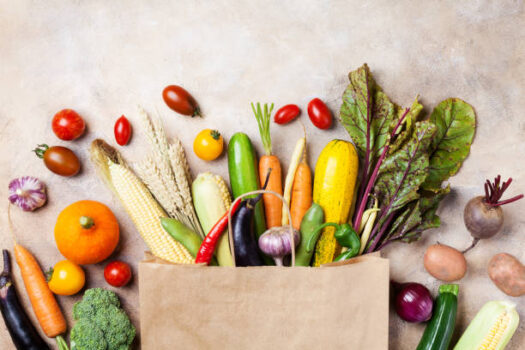You have spent the time and effort on planning and purchasing your fresh produce. The next step before preparing your meals is to keep this produce fresh. Proper storage of produce can ensure that your fruits and vegetables are maintaining their freshness. The American Heart Association created an infographic on this topic. Print this out and keep it in your kitchen to refer to. Below are general rules and guidelines on where to store your fruits and vegetables.
Here are some general rules to follow:
- Always refrigerate your cut or peeled produce.
- Store your vegetables and fruits separately.
- Maintain your fridge temperature at 40 degrees Fahrenheit or below.
- Citrus and stone fruit can be refrigerated for longer storage once ripened.
- When storing on the countertop, store the produce loose and away from sunlight and moisture.
- When storing in the fridge, store in plastic bags with holes in your produce drawer.
In The Pantry:
- Garlic, onions, and shallots
- Hard squash such as winter, acorn, spaghetti, and butternut
- Sweet potatoes, potatoes, and yams
- Watermelon
On The Countertop:
- Bananas
- Tomatoes
- Citrus fruit
- Stone fruit
In The Refrigerator:
- Apples and pears
- Beets and turnips
- Berries, cherries, and grapes
- Broccoli and cauliflower
- Carrots and parsnips
- Celery
- Corn
- Cucumbers, eggplant, and peppers
- Green beans
- Lettuce and leafy greens
- Melon
- Mushrooms
- Peas
- Zucchini and summer squash
Again, proper storage helps you save money in the long run by ensuring that you are utilizing the foods that you purchase and preventing food waste. If you find that you cannot use up your fresh produce in time, freeze what you cannot finish or buy frozen produce!
Written by:
Laura Ortiz, MS, RD, LDN


